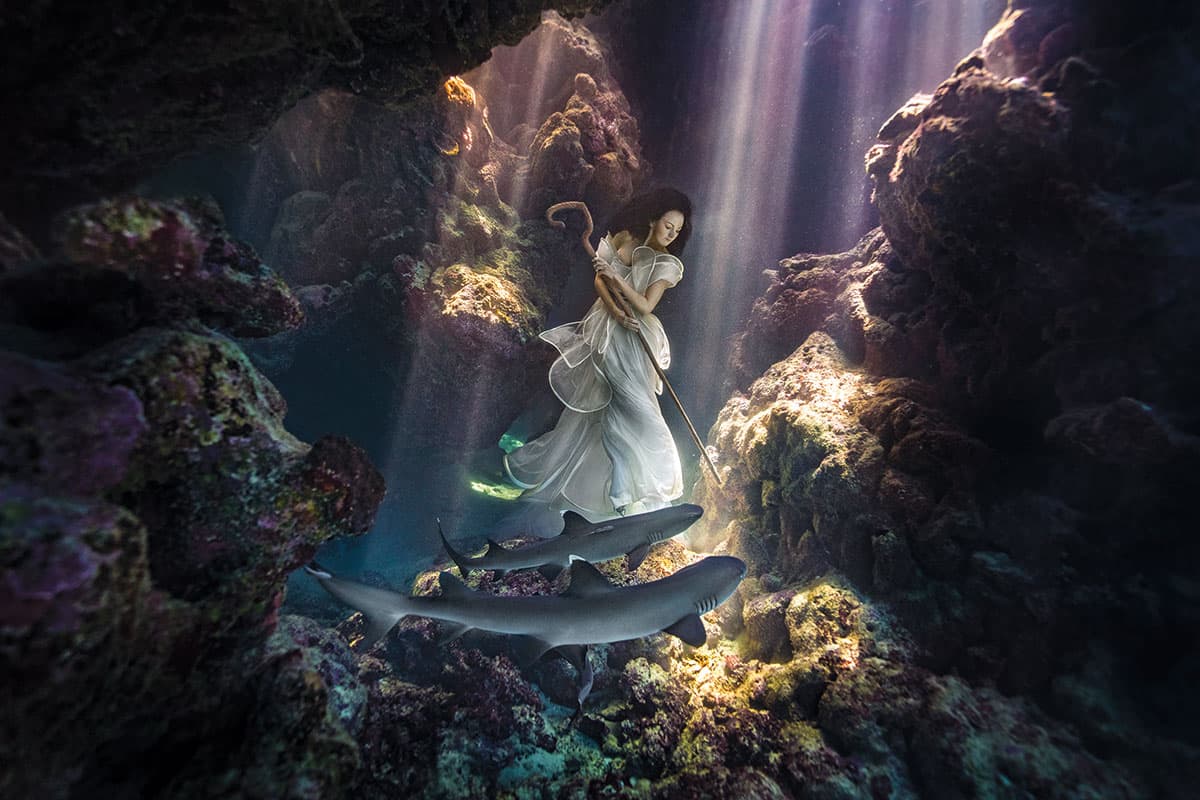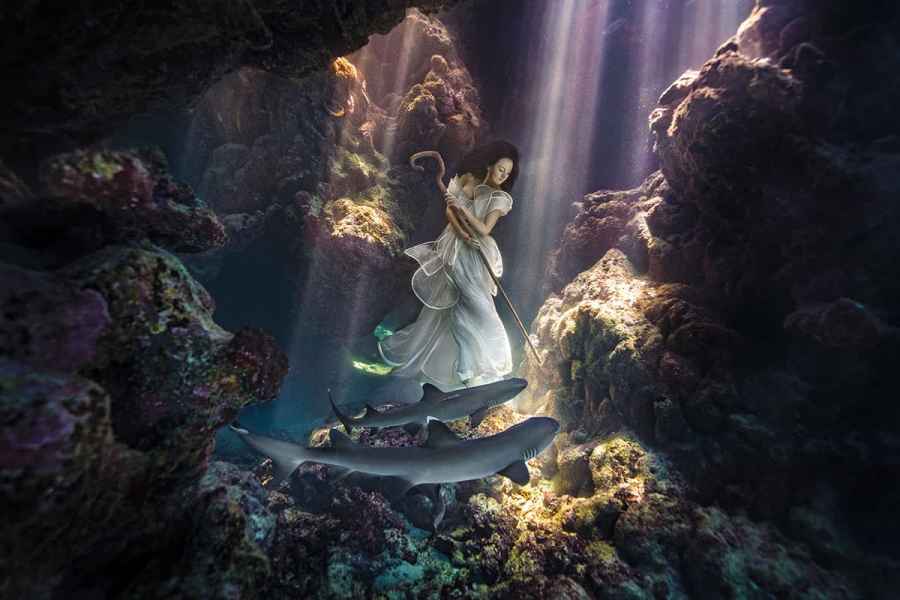
It took five long days of preparation and patience to achieve this shot
Despite being of Chinese descent and growing up in Canada, my roots lie in Malaysia, a country my parents considered to be their home. As a result, when I heard of conservation efforts to establish shark sanctuaries there, I felt compelled to use my photography and network to support the environmental campaign for change.
It soon became apparent that, if the campaign were to succeed, a political petition would be required. Along with YB Datuk Seri Panglima Masidi Manjun, the Minister for Tourism, Culture and Environment in Sabah, northern Borneo, and the Shark Stewards (an organisation dedicated to combating the shark-fin trade), we aimed to collect 100,000 signatures worldwide. By encouraging people to abandon their misconceptions surrounding sharks and instead, understand the facts – in particular, the importance of sharks to the oceans’ ecosystems – we hoped to reverse the plight of these fish.
I had heard that Fiji is home to some of the most incredible sharks, so I was keen to go there and see them. My first problem was that I was unable to find the right contact or make concrete plans until I had actually landed in Fiji. Meanwhile, not knowing how a usually merciful white-tipped reef shark might react to a model in a billowing dress underwater, made the challenge totally unpredictable.
Of course, the regular complications of shooting underwater offered their own strains. Finding a team of experienced divers to assist us was always going to be a problem, especially since we had no budget. We were using specialist equipment, including a Sony Alpha 7R II in a Nauticam housing. However, once in the water, communicating with each other was complicated and our oxygen supply was limited.
Also, the demanding conditions meant we could shoot for only two hours at around noon each day when the sharks were most active and the light was most visible inside the caves. I wanted to use off-camera strobes, but without enough manpower we had to rely entirely on natural light. Somehow, we managed to overcome all the obstacles.
The plan was to go out in the boat to the underwater caves. Thomas Vignaud, our French marine biologist, would then search for the sharks and signal to us when he found them. The rest of us would hop into the water and set up the scene, only calling our model when we were ready.
As a champion Australian freediver in her own right, Amber Bourke has, crucially, a fine-tuned appreciation of safety, as well as lots of underwater experience. Wearing a free-flowing dress by Indonesian designer Ali Charisma, she was tied to a rock formation under a beam of available light using a slipknot attached to a 10kg lead weight. Once she was in position, the shepherd’s crook was handed to her, dead fish were rubbed on the rock to release a scent to attract the sharks and all we had to do was wait. Simple – or not so, as it turned out.
The white-tipped reef sharks hovered around us like curious squirrels in the park, but darted away if anyone dared to get too close. It was a race against time whenever one swam far enough into the cave, as Amber would take a deep breath, rip off her mask and strike pose after pose for as long as she could – up to a minute and half each time.
It took five long days to create four shots. Day one: diving practice and technique touch-up. Day two: location scouting and final preparation planning. Days three, four and five: wait for the ocean’s gentle giants to show up.
Some days, the sharks were friendly and curious, swimming over to investigate almost immediately. On others, we spent the entire dive waiting. It turns out that attracting animals underwater is a lot harder than on the surface.
To make matters even more difficult, you cannot make a sound as the trust of the sharks can only be gained quietly. Despite being inquisitive, sharks are incredibly shy creatures. All we could do was play their game, their way. Waiting forever then capturing that split-second moment as they moved into frame was seriously taxing.
Back on dry land, after five days of working, six hours of waiting and many moments of touch and go, we had our four final shots ready for editing. The greatest problem with editing underwater images is overcoming the loss of the warm wavelengths filtered out by the deep water. The layers of murky blues, greens and purples are not an attractive look for human skin, which takes time to bring back to life.
Once the edits were complete, the final stage was to share our story, change preconceptions, gain momentum for the petition and build the shark sanctuaries – all much harder than that one week we had worked.
With 69% of our target already reached, we’re hoping that the world will view sharks in a different light, and allow our ambitions for the shark sanctuaries to be achieved.
To support the campaign and sign the petition, visit www.change.org/p/support-malaysian-shark-sanctuaries
Nauticam NA-A7II

The Nauticam NA-A7II housing for the Sony Alpha 7 II has ergonomically placed controls with size, shape and colour differentiation to aid finding the right controls underwater. It has a depth rating of 100m and has built-in adjustable handles with rubberised grips for easy underwater control. Find out more at www.nauticamusa.com/news/2015/3/5/new-housing-for-sony-a7-ii.
Benjamin Von Wong
Benjamin, 29, is a Chinese-Canadian photographer based in Montreal. His background is in engineering which, he says, gives him an edge in creative problem solving. He specialises in shooting surrealist compositions that, he insists, are definitely not the result of Photoshop. www.vonwong.com








